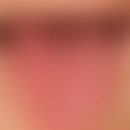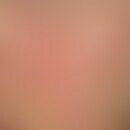DefinitionThis section has been translated automatically.
Free or pedicled grafts covering all skin layers to cover a skin defect. Usually indicated for very large/deep skin defects, for lack of granulation tendency or for defect wounds on the hands. Pedicled flap grafts are mainly used to cover periosteal bone, exposed tendons and/or joints. See also split skin transplantation, see also mesh graft transplantation below.
ImplementationThis section has been translated automatically.
The graft should be fixed with slight tension and even pressure on the defect site. Immobilization for 5 days. Bandages can be left in place for up to 10 days if healing is uncomplicated. Advantage over split skin grafts: low shrinkage and high load capacity. Disadvantage: the size of the transplant is limited by the donor site, which should be primarily closed.
Undesirable effectsThis section has been translated automatically.
Healing and functional disorders at the donor site, pigment shifts of the full-thickness skin graft, anastomosis insufficiency.
LiteratureThis section has been translated automatically.
- Adnot J, Salasche SJ (1987) Visualized basting sutures in the application of fullthickness skin grafts. J Dermatol Surg Oncol 13: 1236-1239
- Breuninger H, wooden shoe J (1994) The complete histological presentation of the cut edges of a skin tumor excise (3-D histology) in one sectional plane using the "flounder technique". Nude Dermatol 20: 7-10
- Salasche SJ, Feldman BD (1987) Skin grafting: preoperative technique and management. J Dermatol Surg Oncol 13: 973-978
- Schulz H (1988) Operative dermatology of the face. Practical interventions. Diesbach, Berlin
- Schulz H, Altmeyer P, Stücker M, Hoffmann K (1997) Outpatient operations in dermatology. Hippocrates, Stuttgart



